Framed “Writing the Declaration of Independence” (21×28 image size) with storyboard
$350.00
21×28 framed print of “Writing the Declaration of Independence” with 8×10 storyboard. The frame is 2-inch scooped beaded mahogany frame. The image is mounted on gator board with canvas seal overlay. — FREE SHIPPING on all orders over $50, $4.95 for orders under $25, and $9.95 for orders between $25 and $50. Please allow 3 weeks for production and shipping.
The Revolutionary War had begun on April 19, 1775 with the “shot heard around the world.” More than a year after the battle at Bunker Hill and six months after Paine’s Common Sense had raised all the unheard voices of America into one loud roar for independence, an extraordinary meeting was held in Philadelphia.
Early in 1776 Thomas Jefferson had asked Thomas Paine to help draw up a statement reviewing the causes of the war and include a simple declaration of the principles for which the people were fighting. This tentative document was now ready, and representatives from each of the colonies had come to the meeting to consider its adoption.
On June 7, 1776, Richard Henry Lee of Virginia stood up in Congress to propose a resolution according to the instructions of his constituents. Lee held a piece of paper in his hand and slowly read: “Resolved: That these United Colonies are, and of right ought to be free and independent States: that they are absolved from all allegiance to the British Crown; and that all political connections between them and the State of Great Britain is, and ought to be, totally dissolved.” John Adams was on his feet to second the motion before any objections could be heard.
The Congress debated, often angrily, if independence should be declared. However, both groups agreed it was prudent to prepare a declaration of independence and have it ready should the final vote be affirmative. On June 11 a committee of five was named to draft the declaration. The committee consisted of Thomas Jefferson of Virginia, Benjamin Franklin of Pennsylvania, John Adams of Massachusetts, Robert Livingston of New York, and Roger Sherman of Connecticut.
Thomas Jefferson consented to write the declaration because John Adams told Jefferson, “I am feared and hated in Congress. Besides, you write ten times better than me.” Jefferson composed the Declaration between June 12 and 27. The committee revised it very little. On June 28 a copy of the committees draft was read in Congress.
On July 1, 1776, Congress reconvened. On June 2 Congress adopted the Lee resolution and declared independence at the same time the British fleet and army arrived at New York Harbor. Immediately afterward, Congress began to consider the Declaration. The discussion in Congress resulted in some alterations and deletions such as Jefferson’s accusation that Kind George III was “determined to keep open a market where MEN should be bought and sold and had suppressed every legislative attempt to prohibit or to restrain this execrable commerce.” (Jefferson was opposed to slavery and resented the fact that the King of England promoted it.)
The process of revision continued through all of July 3. On July 4, 1776 Congress adopted the Declaration of Independence in the morning of a bright, sunny, but cool Philadelphia day. John Dunlap printed the Declaration of Independence. These prints are now called “Dunlap Broadsides.”
On July 5 John Hancock, President of the Continental Congress, dispatched the first of Dunlap’s broadsides of the Declaration of Independence to the legislatures of New Jersey and Delaware, and on July 6 the Pennsylvania Evening Post printed the first newspaper rendition of the Declaration of Independence.
On July 8, 1776, the first public reading of the Declaration of Independence took place, and the Liberty Bell, procured 25 years earlier by William Penn to commemorate religious liberty, was rung. On the Liberty Bell is inscribed the following words from Leviticus 25:10: “Proclaim LIBERTY throughout all the Land unto all the inhabitants thereof.”
The Declaration of Independence was approved by the Second Continental Congress on July 4, 1776, but it was not signed until almost a month later. The Congress did not have the approval of all 13 colonies until July 9, 1776. On July 19, the Congress ordered that an official copy of the document be created. The order called for handwritten ornamental script (called engrossing) to be used on parchment paper with the title “The unanimous declaration of the thirteen United States of America.” The signing of the Declaration of Independence took place on August 2, 1776. It was at this time that Benjamin Franklin famously quipped, “We must all hang together, or assuredly we shall all hang separately” after signing the Declaration of Independence. Now their treason against Great Britain was in writing.
Jean Leon Gerome Ferris was born in Philadelphia, Pennsylvania in 1863, when the Civil War was raging. Historical painter, illustrator and etcher, he created work that is displayed in Congress Hall in Philadelphia. About 1900, Ferris began seventy historical paintings intended to depict consecutively the story of the American people from 1492 to 1865. The paintings cover early settlements through the nation’s development, up to Abraham Lincoln. The collection was hung in Philadelphia’s Congress Hall in 1930 in a gallery built for the purpose. It is said that Ferris was droll, genial and witty and that he lived a fruitful and happy life.
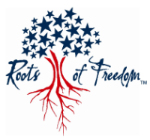
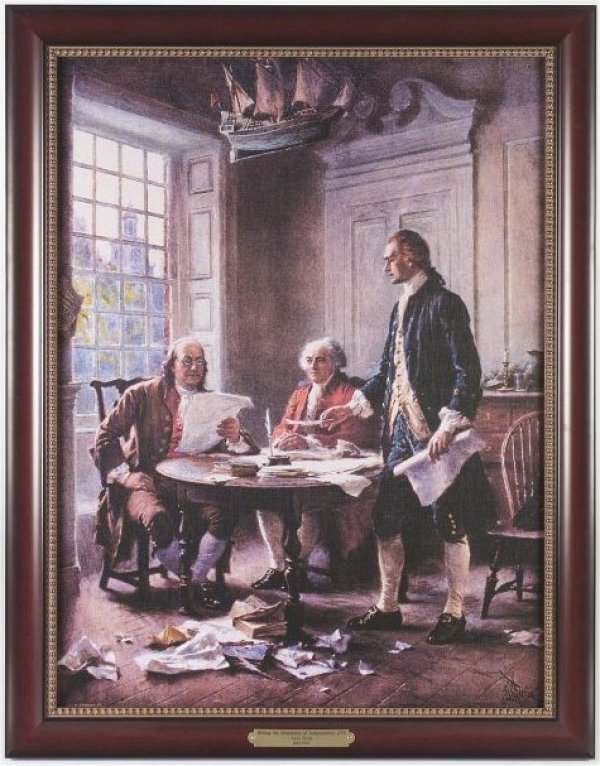
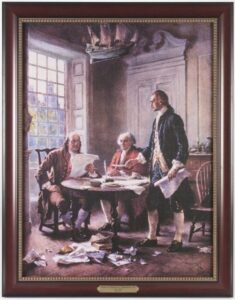
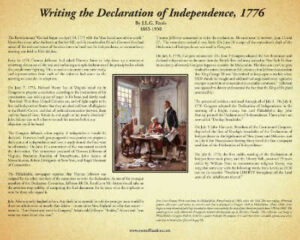
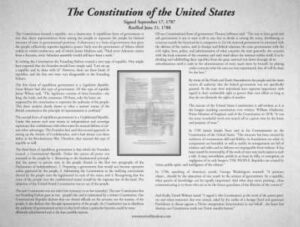

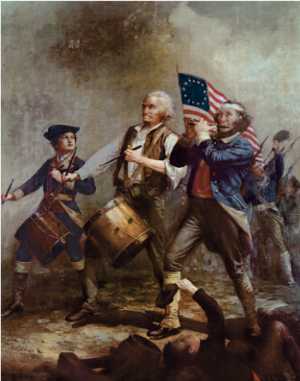
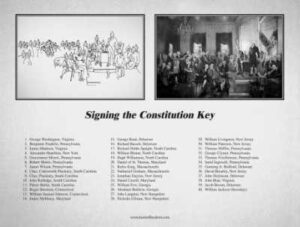
Reviews
There are no reviews yet.